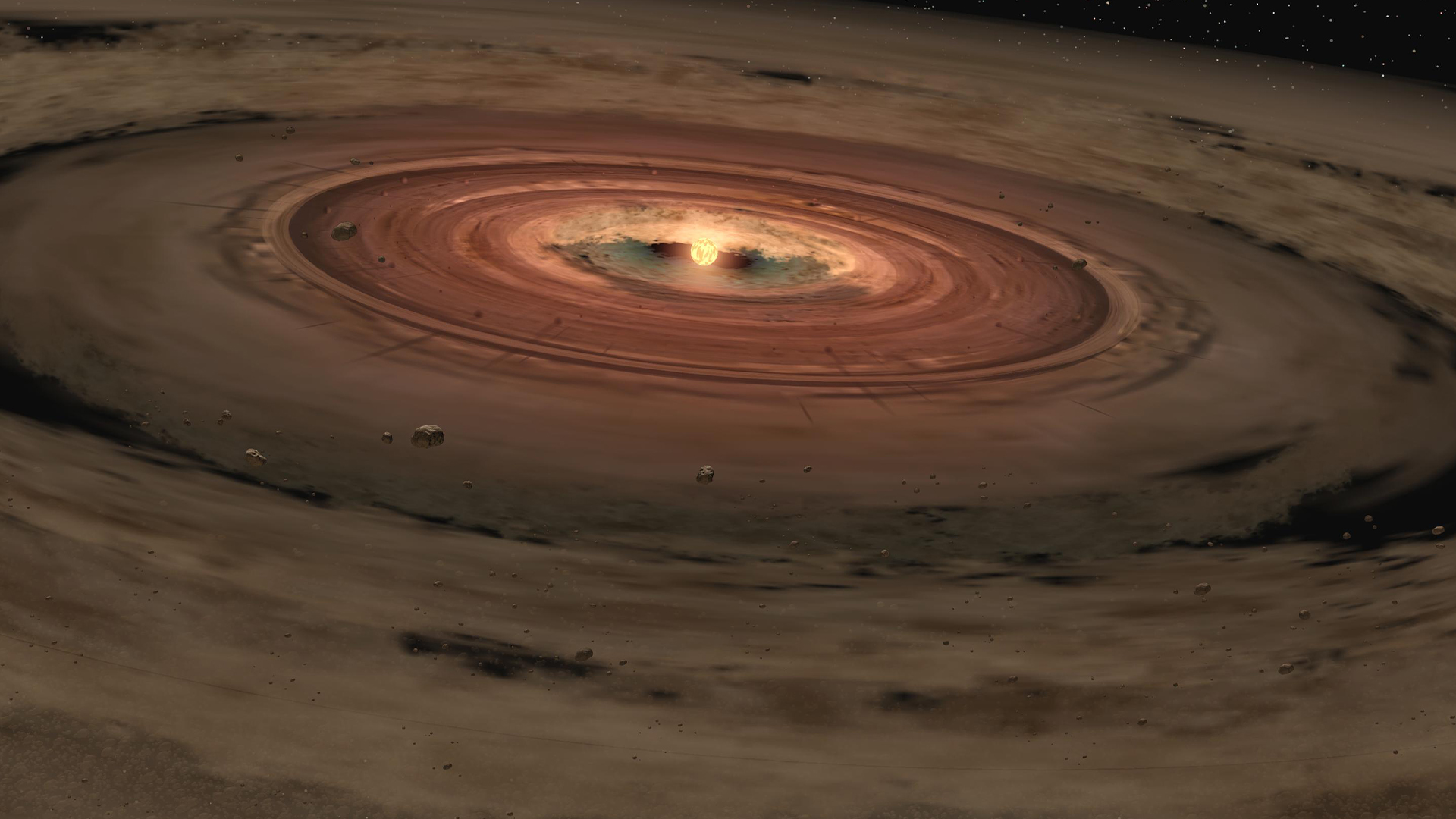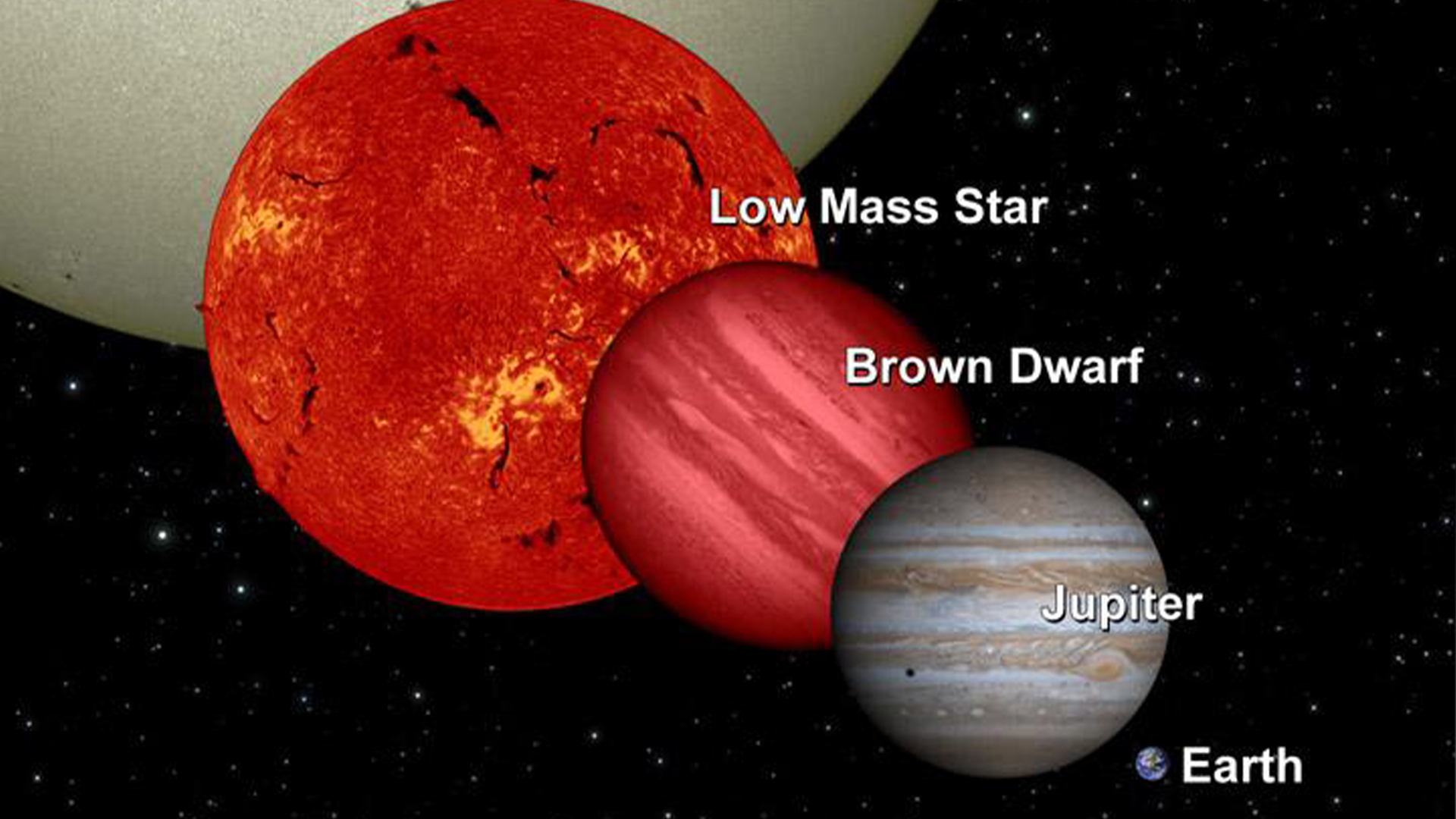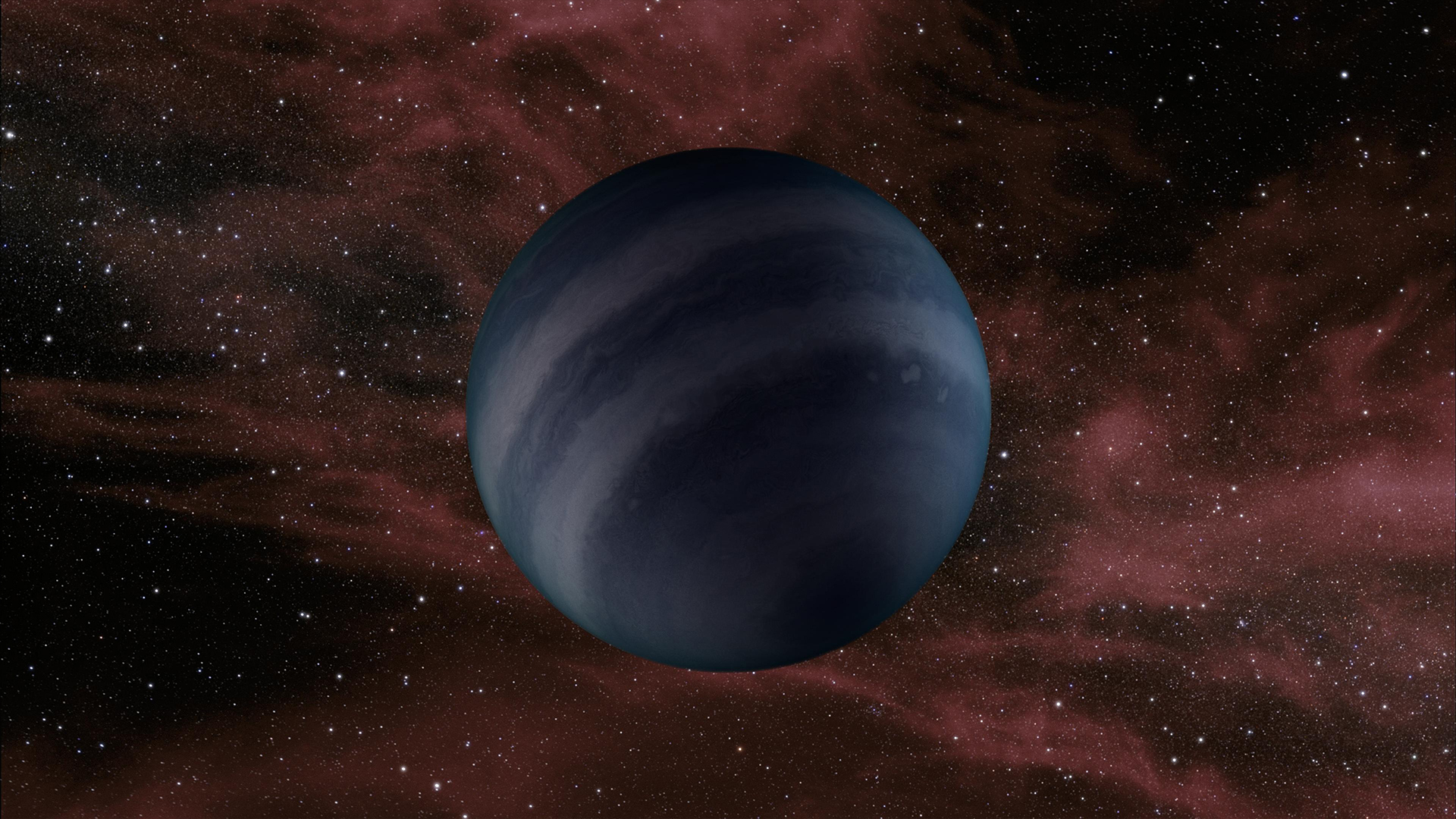
Between the smallest stars and the most massive planets, a strange class of celestial objects pervades the universe. Called brown dwarfs, or "failed stars," these liminal objects are more massive than gas giants such as Jupiter but less massive than the smallest stars.
They're also really common: Astronomers recently discovered that there could be as many as 100 billion of these faintly glowing bodies scattered throughout the Milky Way. With estimates of the Milky Way's stellar population ranging from 100 billion to 400 billion, that means brown dwarfs could be almost as common as stars themselves.
But why do brown dwarfs fail to become stars?
Related: Mysterious object called 'The Accident' has been careening through the Milky Way for 10 billion years

Why do brown dwarfs "fail"?
The short answer is that brown dwarfs don't have enough mass to trigger the steady nuclear fusion of hydrogen.
Both stars and brown dwarfs are born when massive clouds of gas and dust collapse. These "protostars" continue to gather material from these clouds until they reach masses at which the internal pressure and temperature are significant enough to trigger hydrogen burning, fusing hydrogen atoms to create helium.
"For what distinguishes a star and brown dwarf, it goes back to the fact that low mass stars (M dwarfs) have stable hydrogen fusion, and the smallest of these will have fusion for trillions of years — longer than the current age of the universe," Nolan Grieves, a postdoctoral researcher in the Department of Astronomy at the University of Geneva, told Live Science via email. "Whereas high mass brown dwarfs do not achieve stable fusion over the long term."
But that doesn't mean brown dwarfs don't burn hydrogen at all.
"Interestingly, some brown dwarfs will become hot enough to start hydrogen fusion, but they cannot balance nuclear burning in their core with photon losses at their surface," he said. "So their core temperature eventually falls below the hydrogen burning limit."
So, if brown dwarfs can't be considered stars, wouldn't it just be easier to classify them as very massive planets? That doesn't really work either.

Why aren't brown dwarfs considered planets?
Even though a brown dwarf can't achieve stable hydrogen fusion, that doesn't mean it is incapable of sustaining any form of nuclear fusion at its core.
The dividing line between brown dwarfs and gas giant planets is generally considered somewhere between 10 and 14 times the mass of the solar system's most massive planet, Jupiter. That means we shouldn't find a planet with more than around 13 times the mass of Jupiter.
Related: Bizarre 'failed star' the size of Jupiter is 2,000 degrees hotter than the sun
This is because, at this mass, celestial bodies are capable of triggering the steady nuclear burning of deuterium, a "heavy" form of hydrogen. Rather than having a nucleus of just one proton as does "standard" hydrogen — the universe's lightest element — deuterium has a nucleus of one positively charged proton and a non-charged neutron. This is the reason brown dwarfs can have a faint glow.
"The major difference between brown dwarfs and planets is their mass and the occurrence of deuterium burning," Grieves said. "At larger masses, an object will have a high enough internal pressure and temperature to burn a majority of the deuterium that was initially present in the object."
The dividing line has been set so brown dwarfs are classified as objects that burned 50% or more of their initial deuterium. Yet that line is blurry, because other characteristics beyond mass — like the fraction of helium in a celestial body — could result in the burning of deuterium.
In the future, Grieves said, it might be possible for the difference between planets and brown dwarfs to be redefined: Brown dwarfs could be classed as celestial objects that are not stars but are created when a cloud of gas and dust collapses, whereas planets could be defined as overdense blobs that form in a disk of protoplanetary material around a collapsed star.
Until then, these fascinating celestial objects may have to exist with the suggestion of "failure."







